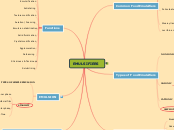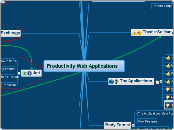EMULSIFIERS
Substances which reduces the surface tension at the interface of two normally immiscible phases, allowing them to mix and form and emulsion.
Hydrophilic Lipophilic Balance (HLB)
The balance of size and strength of the hydrophilic (water loving/polar) and the lipophilic (oil loving/non polar) groups on the emulsifier.
HLB of 10-18
Good o/w emulsifier
HLB of 7-9
Good wetting agent; can be used for w/o or o/w emulsifier
HLB of 3-6
Good w/o emulsifier
EMULSION
A dispersed two-phase system, an intimate mixture of two liquids that are immiscible under normal conditions.
STABILITY
Ratio and the specific weight of the volumes of two phases
Viscosity of the outer phase
Quality/stability of the interfacial film
Degree of division of the inner phase
TYPES OF SIMPLE EMULSION
Oil in water (O/W)
Water in oil (W/O)
Functions
Solubilizing
Stickiness & Tackiness
Defoaming
Agglomeration
Crystal modification
Solid fluidization
Emulsion stabilization
Aeration / Foaming
Texture modification
Antistaling
Emulsification
Palatability improvement
Wetting
Applications of Food Emulsifier
Noodles & Pasta
Frozen dairy products - Ice cream
Confectionery products & Coatings
Cakes
Bread, Rolls, Buns
Types of Food Emulsifiers
AMPHOTERIC
Lecithins
CATIONIC
Amine compounds
ANIONIC
Succinylated monoglycerides
Diacetyl tartaric esters of monoglycerides (DATEM)
NONIONIC
Polyoxyethylene glycol oleates
Polysorbates
Common Food Emulsifiers
Lecithin and Derivatives
Stearoyl lactylates
Polisorbates
Polysorbate 80
Polysorbate 65
Polysorbate 60
Sorbitan esters
Sucrose esters
Mono & Diglycerides









